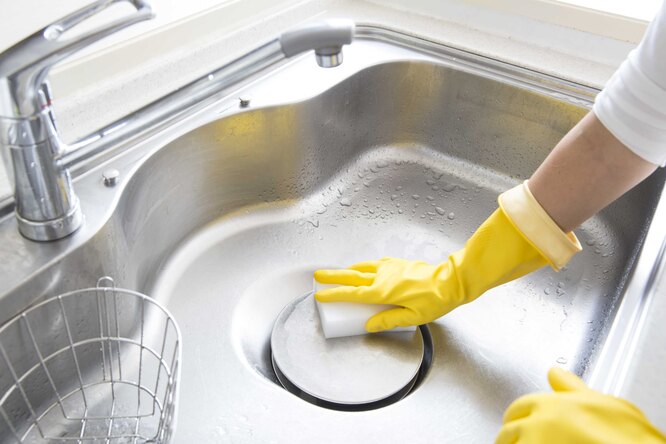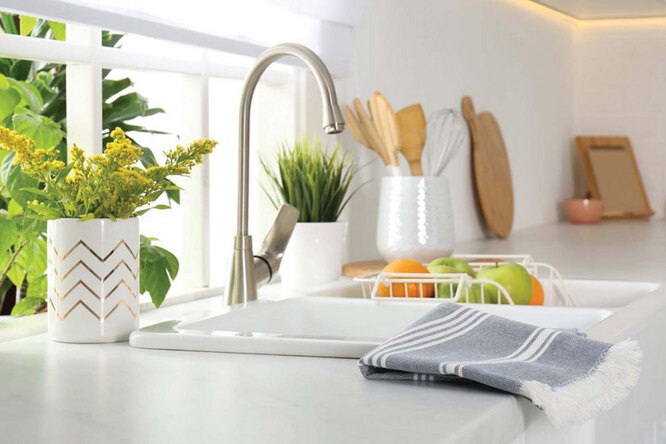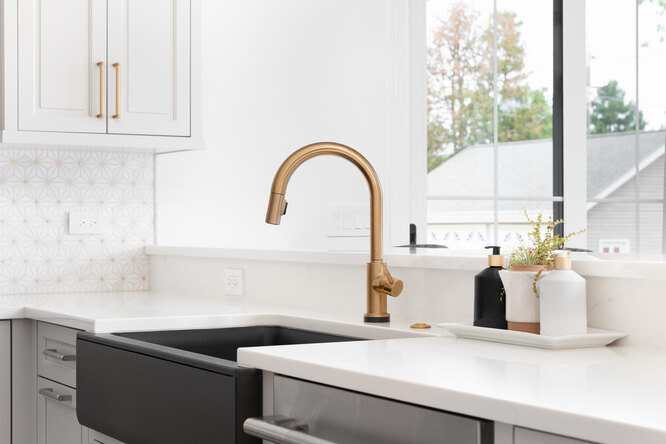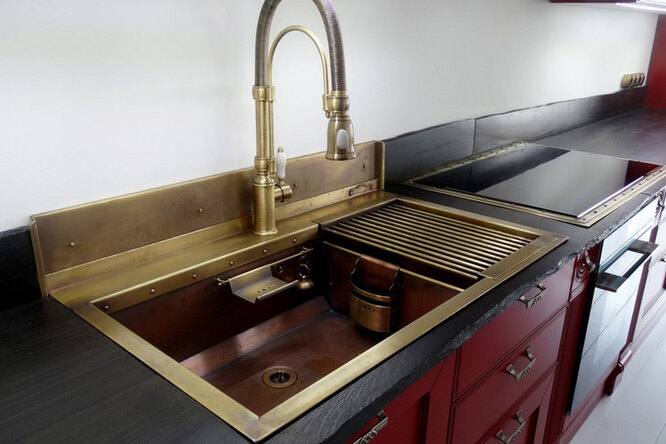White sinks have a special charm, but on one condition: if you wash them on time. Lynn Stapf, manager of a cleaning company, says cleaning enamel sinks with bleach is the best choice.
How to clean a sink with bleach:
Hydrogen peroxide will help remove stubborn enamel stains – just use new one, as the product runs out quickly after opening the bottle. Cover the sink with a layer of paper towels (or place one over the stain), spray them with peroxide, wait at least half an hour, then wash the surface thoroughly.
How to clean a composite sink
These sinks are made from crumbs of natural minerals – quartz, granite, slate – and the resin acts as a binder. In the case of a composite sink, you should remember two main rules: on the one hand, you should not use hard sponges or brushes, and on the other hand, you should avoid acidic cleaning products.
An excellent solution for removing scale and deposits in a composite sink is a solution of 9% vinegar and water in a 1:1 ratio: pour it into a spray bottle, apply it to the limescale, wait for a little, then rinse with water and scrub the sink with a soft brush. However, this product is intended for “severe” cases: you should not use it for regular cleaning.
It’s best to wash a composite sink weekly with dishwashing liquid: fill the sink with water, add the product to it, wait an hour, then go over the walls with a brush or microfiber cloth – if you do not skip the “sessions”, this will then be enough to prevent the stone from becoming dull and covered with stains.
How to clean a copper sink
A copper sink looks luxurious, but it is difficult to maintain: you cannot use abrasives, bleach or hard brushes. Why, experts recommend leaving even dirty dishes there for a long time (especially if there are traces of grease, ketchup or lemon juice on them).
The best way to wash a copper sink is to use dish soap: mix a teaspoon with a quart of water, dip a cloth in the solution and wipe it over the sink, faucet and handles , then remove any remaining product with clean water.
How to Unclog a Kitchen Sink Drain
Is water flowing normally down the drain? This doesn’t mean the pipes don’t need cleaning: they trap grease and food debris, which can cause an unpleasant odor. To avoid this, it’s very simple: here’s what you need to do when cleaning the kitchen.
How to Keep Your Sink Clean: 5 Main Rules
Even more interesting materials can be found in our Telegram channel.












